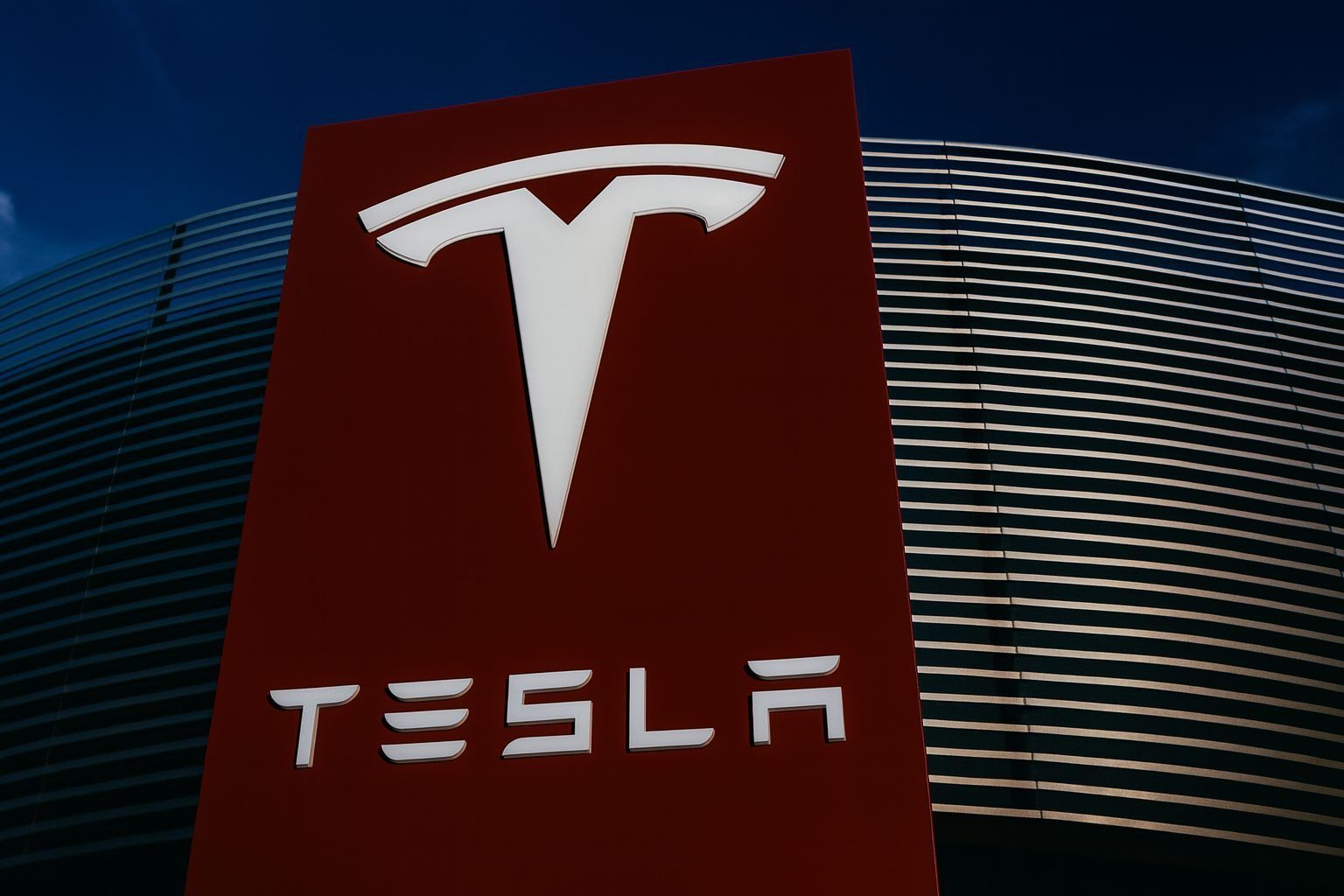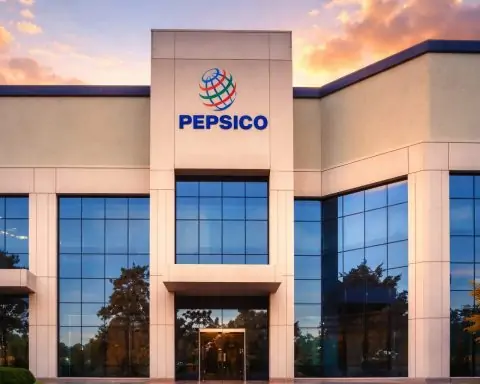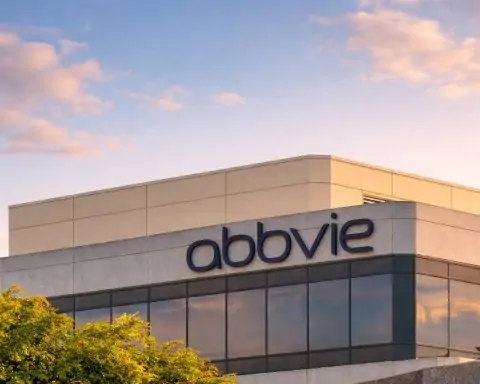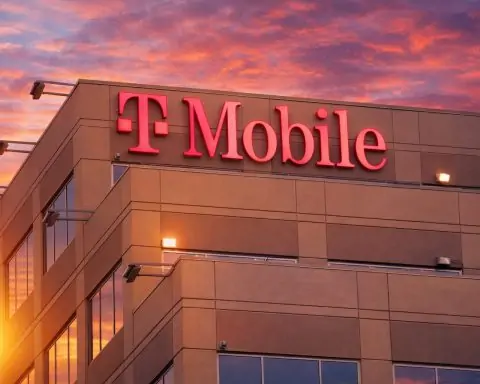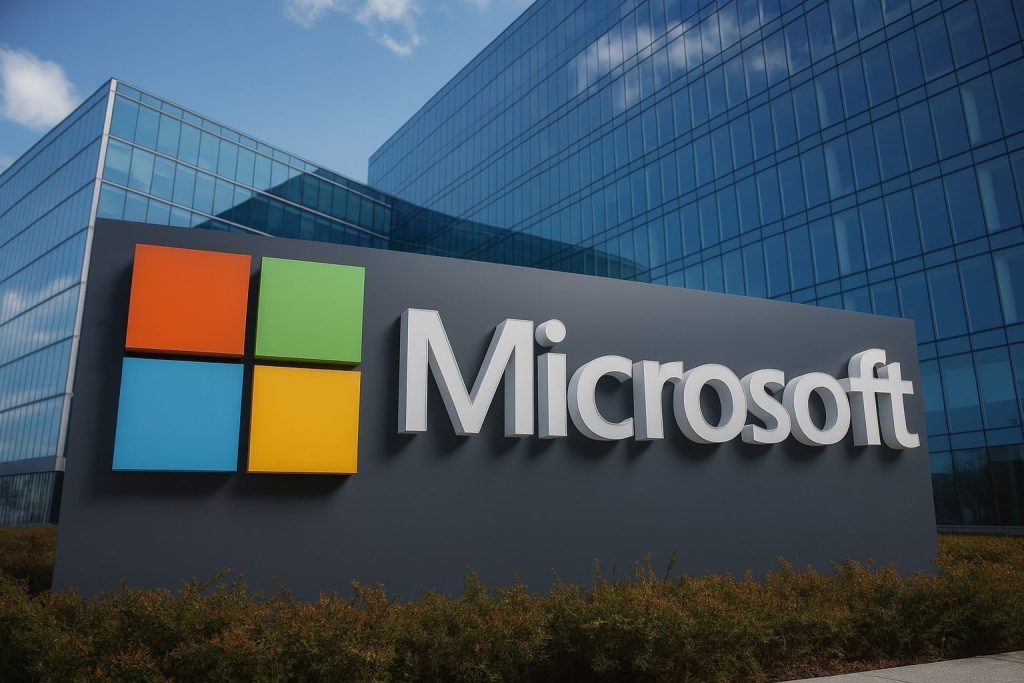Published: November 28, 2025
Tesla, Inc. (NASDAQ: TSLA) heads into today’s shortened Black Friday session trading close to its recent highs, as investors weigh a powerful autonomy-and-AI narrative against increasingly worrying data from its core electric‑vehicle business.
The stock’s latest official close was about $426.58 per share, up roughly 1.7% versus the prior session, with pre‑market indications pointing to a modestly higher open around the $428 level. [1] That puts Tesla in the upper part of its 52‑week range between roughly $214 and $489, and values the company at about $1.42 trillion — a valuation that implies a price‑to‑earnings multiple near 280–330x current‑year earnings, depending on the methodology. [2]
Tesla stock price today: TSLA hovers near $426 in a short trading session
With U.S. markets open only for a half‑day on Black Friday, trading volumes are lighter than usual, but TSLA remains one of the most closely watched tickers on the Nasdaq.
Key numbers as of today’s session (based on the latest available data):
- Last official close: ~$426.58
- Move vs previous session: about +1.7% [3]
- Implied pre‑market change: modest upside around $428, or roughly +0.4% [4]
- 52‑week range: roughly $214.25 – $488.54 [5]
- Market capitalization: about $1.42 trillion
- Valuation: approx P/E 284x and P/E/G 16.8x, with a beta above 2, meaning the stock typically moves more than twice as much as the broad market. [6]
On a year‑to‑date basis, Tesla shares are only up around 4%, lagging both the S&P 500 (~+15%) and the Nasdaq 100 (~+19%), despite the eye‑watering valuation. [7] That combination — modest price performance but extreme multiples — is at the heart of today’s debate around TSLA.
FSD v14 free trial and robotaxis keep the AI story front and center
The bullish narrative today is less about car sales and more about software, robotaxis and robotics.
FSD v14 trial in North America
- In recent days, Tesla has rolled out a 30‑day free trial of its latest Full Self‑Driving (FSD) v14 software in North America, aiming to get more drivers using its premium driver‑assistance package. [8]
- FSD remains classified as an advanced driver‑assistance system, requiring driver oversight, and faces ongoing regulatory scrutiny in the U.S. and overseas, but the trial is designed to showcase improvements and potentially convert more paying subscribers.
Analysts see this as an attempt to support Tesla’s recurring‑revenue “software layer” story and show regulators that its in‑house AI stack is improving over time.
Robotaxis in Austin – and beyond
Robotaxis are another major pillar of the Tesla story today:
- Tesla launched a self‑driving taxi service in Austin, Texas, in June 2025, currently operating vehicles with human safety drivers behind the wheel. [9]
- This week, Elon Musk said on X that the Austin robotaxi fleet will “roughly double” in December, less than six months after launch. [10]
- On Tesla’s latest earnings call, Musk reiterated plans to remove safety drivers in parts of Austin by year‑end and said the company aims to be operating robotaxis in roughly 8–10 metro areas by the end of 2025, subject to safety and regulatory approvals. [11]
For many bulls, these moves support the view that Tesla is evolving from a car manufacturer into a robotics and AI platform — a thesis that helps justify premium valuations even as traditional auto metrics weaken.
Core EV business: sales skid across Europe, China and the U.S.
The bear case, however, is getting louder — and it’s grounded in hard sales data.
Europe: boycotts, competition and an ageing line‑up
Fresh numbers from the European Automobile Manufacturers’ Association (ACEA), highlighted by both MarketScreener and Reuters, show a severe slump: [12]
- Tesla registrations in Europe fell 48.5% year‑on‑year in October.
- For 2025 year‑to‑date, Tesla’s sales are down about 30% in the region, even though overall EV sales are up 26%.
- Tesla’s market share in Europe dropped to around 0.6% in October, with fewer than 7,000 cars sold that month.
Analysts point to several factors:
- An ageing product line‑up: Tesla primarily sells just two mass‑market models in Europe — the Model 3 and Model Y. An entry‑level Model Y variant introduced to revive demand has had limited impact so far. [13]
- Intensifying competition: Over a dozen EV models are now available in Europe for under $30,000, with strong offerings from Volkswagen, Chinese brands like BYD and Xiaomi, and other legacy automakers. BYD sold more than twice as many vehicles as Tesla in Europe in October, while VW’s EV sales this year are roughly three times Tesla’s. [14]
- Reputational headwinds: A wave of boycott calls erupted in Europe after Musk publicly praised far‑right figures in late 2024, and Reuters notes that Tesla’s European sales have not recovered despite Musk toning down political commentary. [15]
China and the U.S.: pressure from all sides
In China:
- Tesla’s October deliveries fell 35.8%, and sales for the year through October are down 8.4%, according to Reuters. [16]
- New competitors such as Chery and Xiaomi’s YU7 are crowding the segment, often at lower price points with fresh designs.
In the United States:
- Tesla saw an 18% sales jump in September, driven by buyers rushing to capture a $7,500 EV tax credit before it expired on September 30.
- That strength reversed quickly, with a 24% sales drop in October, and U.S. auto executives broadly expect EV demand to stay “colder” in the near term. [17]
Despite a record Q3 delivery number boosted by that tax‑credit rush, Visible Alpha now expects global Tesla vehicle deliveries to fall about 7% in 2025, after a 1% drop in 2024. [18]
In short: the EV business is shrinking in the world’s three largest auto markets even as the stock trades at a premium typically reserved for high‑growth tech names.
Financials and valuation: strong free cash flow, sky‑high multiples
Tesla’s latest financial results and analyst models help explain why the stock is so polarizing.
Q3 2025 results and free cash flow
According to MarketBeat and Barchart:
- Q3 revenue came in at $28.1 billion, up 11.6% year‑on‑year and almost 25% quarter‑on‑quarter. [19]
- Tesla generated about $3.9–4.0 billion in free cash flow (FCF) in Q3, roughly 14% of sales, a very strong margin for an automaker. [20]
- Net margin was about 5.5%, and return on equity around 6.6%. [21]
A recent Barchart analysis argues that if Tesla can maintain an FCF margin near 6–7% on analyst revenue forecasts, the shares could be worth over $500 within a year — implying more than 15% upside from the low‑$430s. [22]
Valuation still assumes a huge growth runway
But the same data also underline how much future growth is priced in:
- MarketScreener estimates suggest Tesla is trading at around 327x expected 2025 earnings, falling only gradually to ~221x in 2026 and ~148x in 2027 — levels that would normally require very strong, sustained growth. [23]
- MarketBeat’s snapshot shows a P/E of ~284x, with a P/E/G ratio over 16, signaling that earnings growth forecasts do not fully justify the current multiple on traditional metrics. [24]
The valuation gap between Tesla and peers remains enormous. Bulls say that makes sense if Tesla becomes a dominant AI, robotaxi and robotics platform; bears warn that any stumble in autonomy or robot production could trigger a hefty de‑rating.
Musk’s $1 trillion pay package ties investor returns to robots and autonomy
Another major story shaping TSLA sentiment this month is Elon Musk’s new compensation plan.
On 6 November 2025, Tesla shareholders approved a $1 trillion pay package for Musk — potentially the largest corporate payout in history if all targets are met. [25] Key elements of the plan include:
- A stretch target for Tesla’s market capitalization to reach about $8.5 trillion, roughly eight times its current value. [26]
- Operational goals over the next decade such as:
- Delivering 20 million EVs to customers
- Selling 10 million active FSD subscriptions
- Deploying 1 million robotaxis
- Producing and selling 1 million humanoid Optimus robots
- Achieving $400 billion in annual earnings across four consecutive quarters [27]
Supporters see the package as a bold bet that Tesla will dominate robotics and autonomy. Critics — including activist group “Tesla Takedown” — argue it concentrates too much power in a single, unpredictable leader and rewards Musk despite falling sales and safety controversies. [28]
Importantly, Reuters notes that Musk’s new pay structure does not require a big surge in vehicle sales: he could unlock huge payouts even if Tesla averages about 1.2 million vehicles per year over the next decade, roughly half a million fewer than it sold in 2024, as long as the stock performs. [29] That further shifts attention from cars to software, autonomy and robots.
Big‑money investors are split; Wall Street consensus leans “Hold”
Institutional and high‑profile investors are far from unanimous on Tesla, and that tension is also driving today’s trading narrative.
Cathie Wood vs. Peter Thiel
- Cathie Wood’s ARK Invest remains one of Tesla’s most vocal bulls, with a 2030 price target of $2,600 per share, and an estimate that roughly 90% of that value could come from a future robotaxi business. [30]
- Though ARK has trimmed some TSLA holdings in recent weeks, Tesla is still ARKK’s largest position, making up about 12% of the flagship ETF. [31]
- On the other side, Peter Thiel’s Thiel Macro LLC slashed its Tesla position by about 76% in Q3 2025, dropping from 272,613 to 65,000 shares, amid concerns about a potential AI bubble and overheated tech valuations. [32]
Wall Street price targets: modest downside from here
TipRanks data show that:
- TSLA currently carries a “Hold” consensus rating, with 13 Buys, 11 Holds and 10 Sells over the last three months.
- The average analyst price target is about $383 per share, implying around 10% downside from the current price region. [33]
MarketBeat’s aggregation is similar, listing a consensus “Hold” with an average target just under $395. [34]
This split — celebrity growth investors still optimistic, others de‑risking and a Street average that sits below the current share price — encapsulates why Tesla remains so volatile.
Legal and geographic developments: India push and trademark win
Beyond the major headlines, several smaller developments also matter for the longer‑term story:
- India expansion: Tesla and its local unit have opened their first full‑service Tesla center in Gurugram, Haryana, signaling a more serious push into the Indian market, one of the world’s largest auto opportunities. [35]
- Trademark victory in India: The Delhi High Court granted an interim injunction this week preventing Indian company Tesla Power India from using marks such as “Tesla Power” or “Tesla Power USA,” including for any future EV manufacturing or marketing. The judge held that Tesla has established prior use and goodwill in the “TESLA” brand and that the Indian company appeared to be riding on that reputation. [36]
These steps help secure Tesla’s brand as it prepares for deeper expansion into India — though building a competitive product lineup at local price points may be an entirely different challenge.
What TSLA traders and investors are watching next
Going into and beyond today’s Black Friday session, the main near‑term catalysts for Tesla stock include:
- Adoption of FSD v14 and any early safety or regulatory feedback from the expanded trial in North America. [37]
- Progress on regulatory approvals for FSD in China and Europe, where Tesla is working with partners like Baidu on mapping and data compliance but still faces tight rules and ongoing investigations. [38]
- Robotaxi rollout pace, especially whether Tesla can safely remove safety drivers in parts of Austin and move into additional U.S. metro areas without major incidents. [39]
- Evidence of a sales stabilization or new model roadmap, particularly in Europe where sales have collapsed and Tesla’s lineup looks old versus the latest Chinese and European EVs. [40]
- Macro conditions and interest rates, which affect both EV affordability and the valuation that growth investors are willing to pay for long‑duration AI and autonomy stories.
For now, TSLA remains a high‑conviction battleground stock. Bulls see a once‑in‑a‑generation platform company at the intersection of EVs, AI and robotics; bears see a slowing automaker with political baggage, fierce competition and a valuation that leaves little room for error.
Important disclaimer
This article is for informational and journalistic purposes only and does not constitute financial advice, investment recommendation or an offer to buy or sell any security. Market data may be delayed or revised. Always do your own research and consider consulting a licensed financial adviser before making investment decisions.
References
1. www.marketscreener.com, 2. www.marketbeat.com, 3. stockanalysis.com, 4. www.marketscreener.com, 5. www.marketbeat.com, 6. www.marketbeat.com, 7. www.marketscreener.com, 8. www.investors.com, 9. www.marketscreener.com, 10. www.marketscreener.com, 11. www.marketscreener.com, 12. www.marketscreener.com, 13. www.marketscreener.com, 14. www.marketscreener.com, 15. www.reuters.com, 16. www.reuters.com, 17. www.reuters.com, 18. www.reuters.com, 19. www.marketbeat.com, 20. www.barchart.com, 21. www.marketbeat.com, 22. www.barchart.com, 23. www.marketscreener.com, 24. www.marketbeat.com, 25. www.theguardian.com, 26. www.theguardian.com, 27. www.theguardian.com, 28. www.theguardian.com, 29. www.reuters.com, 30. www.tipranks.com, 31. www.tipranks.com, 32. www.tipranks.com, 33. www.tipranks.com, 34. www.marketbeat.com, 35. www.marketscreener.com, 36. m.economictimes.com, 37. www.investors.com, 38. coincentral.com, 39. www.marketscreener.com, 40. www.marketscreener.com
